How Much Does Amazon Charge for Selling a Product? (2025 Breakdown)

Amazon charges sellers a mix of fees, including account fees, referral fees, and fulfillment costs. But there are also other fees that falls in optional or category-specific costs like advertising or storage.
Here’s what to expect:
- Selling plan fees: Either $0.99 per item (Individual plan) or $39.99/month (Professional plan)
- Referral fees: Typically 15% of the sale price (varies by category, from 6% to 45%)
- Fulfillment fees: Extra costs if you use Amazon's shipping and storage (FBA)
In this guide, we will break down each main fee type and other fees you need to know to help you estimate your selling costs before you get started.
Quick Summary Table: Amazon Selling Fees in 2025
| Fee Type | Cost | When It Applies |
|---|---|---|
| Individual Plan | $0.99 per item sold | Each product sold |
| Professional Plan | $39.99/month | Monthly subscription |
| Referral Fee | 8%-15% (up to 45%) | Varies by category; applies to all sales |
| FBA Fulfillment Fees | Varies (size- and weight-based) | FBA Orders Only |
| Storage Fees | Monthly and long-term fees | FBA inventory |
| Inbound Placement Fees | Variable | For large/bulky FBA items |
| Shipping to FBA | Variable | Seller responsible (unless using Amazon Partnered Carrier) |
| Advertising Costs | Variable | Optional; based on campaign type and budget |
| Return Processing Fees | Variable | FBA Only |
| Currency Conversion Fees | Variable | International sellers receiving USD |
| Closing Fees | $1.80 per item | Media items |
| High-Volume Listing Fees | Variable | Big-sized Amazon business |
You can also check out this link discussing about fees incurred when selling on Amazon.
Selling Plans: Individual vs. Professional
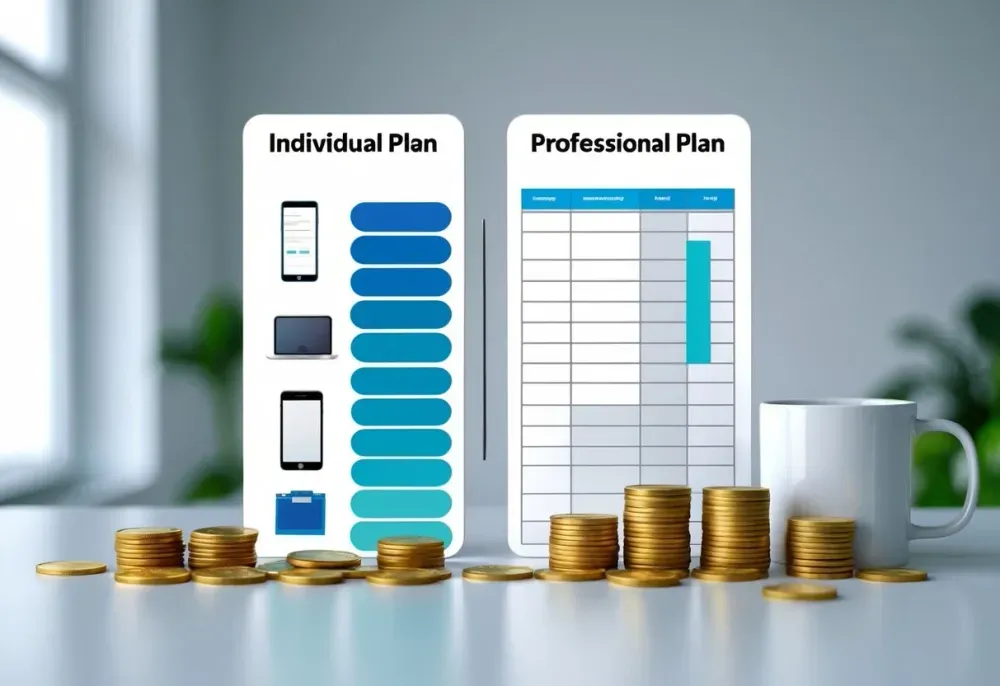
Amazon offers two main selling plans: Individual and Professional. The right one for you depends on how often you plan to sell.
| Plan | Monthly Fee | Per-Item Fee | Best For |
|---|---|---|---|
| Individual | $0 | $0.99 | Fewer than 40 sales/month |
| Professional | $39.99 | $0 | 40+ sales/month |
Choose the Individual Plan if you:
- Are testing the waters
- Sell occasionally
- Have a small or seasonal inventory
Choose the Professional Plan if you:
- Sell regularly
- Want access to advanced seller tools
- Expect consistent or high sales volume
👉 Tip: The break-even point is 40 items/month. If you sell that much or more, the Professional plan saves you money.
Referral Fees by Category
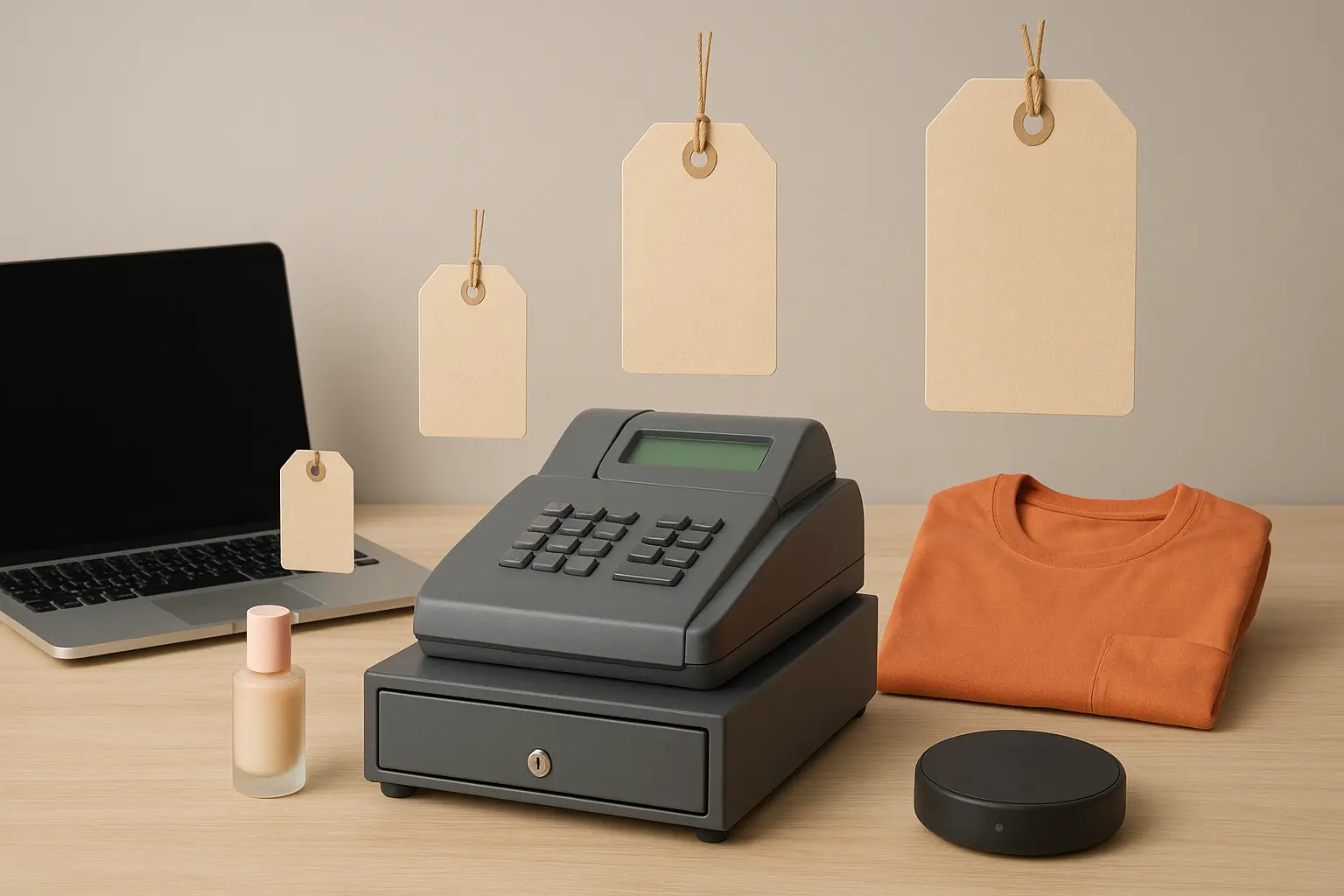
Amazon charges a referral fee on every sale, based on your product category. This fee applies whether you ship items yourself or use Fulfillment by Amazon (FBA).
Here’s a quick look at common categories:
| Category | Referral Fee |
|---|---|
| Personal Computers | 6% |
| Electronics | 8% |
| Books | 15% |
| Home & Kitchen | 15% |
| Beauty & Personal Care | 15% |
| Clothing & Accessories | 17% |
| Amazon Device Accessories | 45% |
👉 Referral fees are calculated on your total selling price, which includes both the item cost and any shipping fees collected from the customer.
You can check your exact category rate using Amazon’s referral fee sched, which helps estimate your costs before listing a product.
Fulfillment Fees: FBA vs. FBM
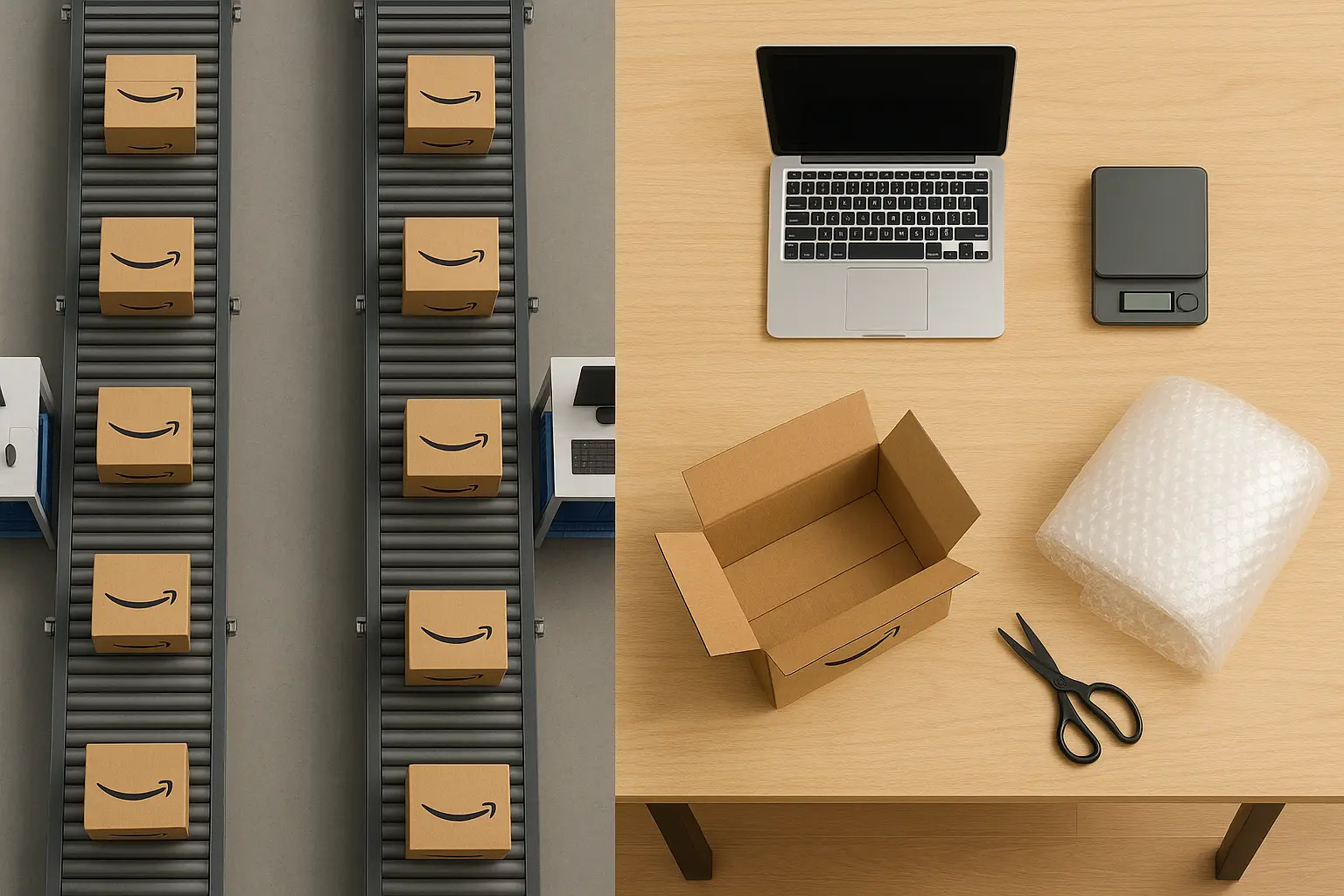
Amazon offers two fulfillment options and the method you choose directly affects your costs.
FBA (Fulfillment by Amazon)
Amazon handles storage, packing, and shipping. Fees are based on your product’s size and weight.
- Starts at $1.97 per unit for small and light items
- Can reach $100+ for oversized products
- Best for small, lightweight items and high-volume sellers
FBM (Fulfillment by Merchant)
You handle storage, packaging, and shipping yourself.
- No FBA fees, but you pay your own shipping and handling costs
- More control over logistics
- Often better for large or bulky items
| Item Type | Typical FBA Fee |
|---|---|
| Small & Light | From $1.97 |
| Standard Size | $3–$8 per unit |
| Oversized | $10–$100+ per unit |
Example:
- A small kitchen spatula may cost $2–$3 to fulfill via FBA
- A bulky item like a kayak could cost $50+, making FBM more cost-effective
Use Amazon’s FBA Revenue Calculator to compare fees and decide which method fits your product and business model.
👉 For a complete breakdown, check out our Amazon FBA Fees Explained guide.
Optional and Additional Fees
Beyond Amazon’s standard selling and fulfillment charges, several optional or situational fees may apply depending on how you sell and manage your inventory. These can impact your profit margins if not accounted for upfront.
1. FBA Storage Fees
If you use Fulfillment by Amazon (FBA), you’ll pay monthly storage fees based on how much space your products take up in Amazon’s warehouses. These fees change depending on the season and product size:
| Product Size | Jan – Sep (per cu. ft.) | Oct – Dec (per cu. ft.) |
|---|---|---|
| Standard-size | $0.87 | $2.40 |
| Oversize | $0.56 | $1.40 |
Long-term storage fees apply to any inventory stored for more than 365 days:
- $6.90 per cubic foot or
- $0.15 per unit (whichever is greater)
These are charged in addition to your regular monthly storage fees.
2. Inbound Placement Fees (FBA)
Amazon charges these when you ship inventory into their network and allow Amazon to decide where to send it.
| Item Size Tier | Fee per Unit (Typical Range) |
|---|---|
| Small standard-size | $0.21 – $0.30 |
| Large standard-size | $0.44 – $0.68 |
| Oversize items | $1.58 – $6.20+ |
You can reduce or avoid this fee by shipping to multiple locations yourself, though it may increase shipping costs.
3. Shipping to Amazon (FBA)
You're responsible for shipping inventory to Amazon’s warehouses. If you use Amazon’s Partnered Carrier Program (UPS), you’ll get discounted rates:
| Package Weight | Estimated Cost per Unit |
|---|---|
| < 1 lb | $0.30 – $0.50 |
| 1–5 lbs | $0.50 – $1.50 |
| 5–15 lbs | $1.50 – $3.50 |
| 15+ lbs | $3.50+ |
Your cost per unit goes down when you ship larger quantities in a single box.
4. Advertising Fees
Amazon offers pay-per-click (PPC) ads like Sponsored Products and Sponsored Brands. There's no fixed cost—your fees depend on bidding and competition.
| Competition Level | Average Cost Per Click |
|---|---|
| Low | $0.20 – $0.50 |
| Medium | $0.50 – $1.50 |
| High | $2.00 – $5.00+ |
5. Return Processing Fees (FBA Only)
These fees apply when customers return items in categories that typically offer free returns (like apparel and shoes). Costs depend on the item size:
| Product Type | Fee Per Return |
|---|---|
| Standard-size item | $2.12 – $5.95+ |
| Oversized item | $6.05 – $10+ |
6. Currency Conversion Fees
If you're paid in a different currency than your bank account, Amazon will convert it automatically.
- Fee: Up to 2.00% above the base exchange rate
- The exact markup depends on your region and payout currency
Example: If you're owed $1,000 USD and Amazon uses an adjusted rate of 0.98 EUR/USD, you'd receive €980—after the 2% fee.
7. Closing Fees
For media products, Amazon charges a $1.80 fixed closing fee per item sold in the following categories:
- Books
- Music
- DVDs
- Software
- Video games and accessories
8. High-Volume Listing Fees
If you list more than 100,000 inactive ASINs (not sold in 12+ months), Amazon charges a monthly listing fee:
- $0.005 per ASIN per month (applies only to the surplus above 100,000)
Example: If you have 150,000 qualifying ASINs, your monthly fee would be (150,000 – 100,000) × $0.005 = $250/month.
👉 Many of these costs aren’t required to sell but can influence your strategy, especially as your business scales. Use Amazon’s tools to estimate them before committing.
Real-World Example: What a Sale Actually Costs
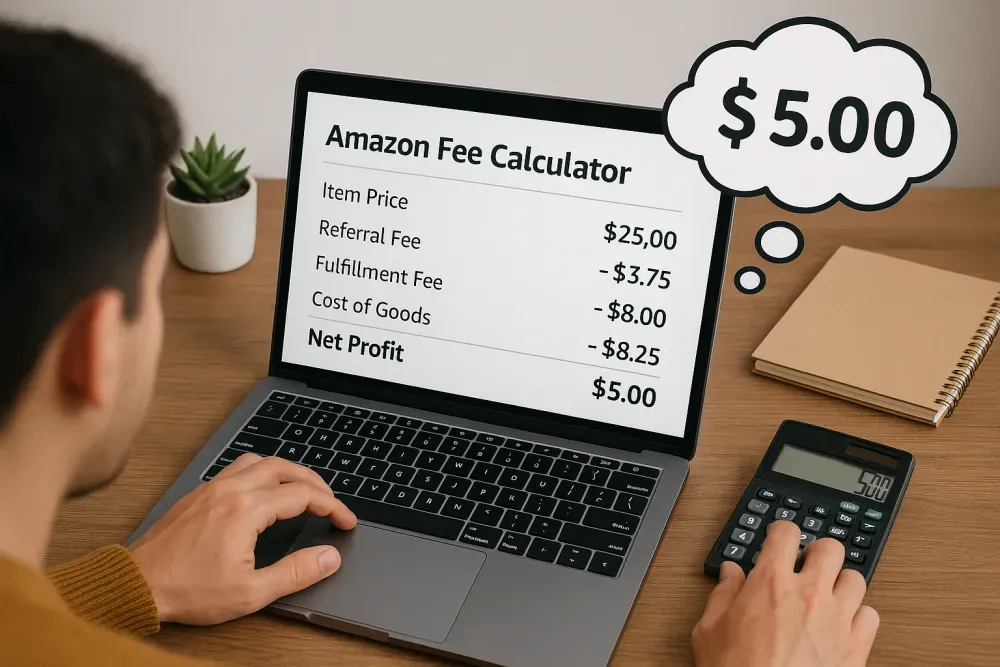
Let’s break down the actual fees for selling a $25 item in the Home & Kitchen category using a Professional selling plan and Fulfillment by Amazon (FBA).
Product Info:
- Sale price: $25.00
- Weight: 1.5 lbs (standard size)
- Selling plan: Professional
- Fulfillment method: FBA
Fee Breakdown:
| Fee Type | How It’s Calculated | Amount |
|---|---|---|
| Referral Fee | 15% of $25.00 | $3.75 |
| FBA Fulfillment | Based on 1–2 lb standard size | $4.71 |
| Subscription Fee | $39.99 ÷ 40 units/month | $1.00 |
| Total Fees | $9.46 |
Net Revenue:
- Gross Sale: $25.00
- Amazon Fees: –$9.46
- Net Revenue: $15.54
If your product costs $8 to manufacture or source, your profit is $7.54 per unit — roughly 30% of the selling price.
Final Thoughts
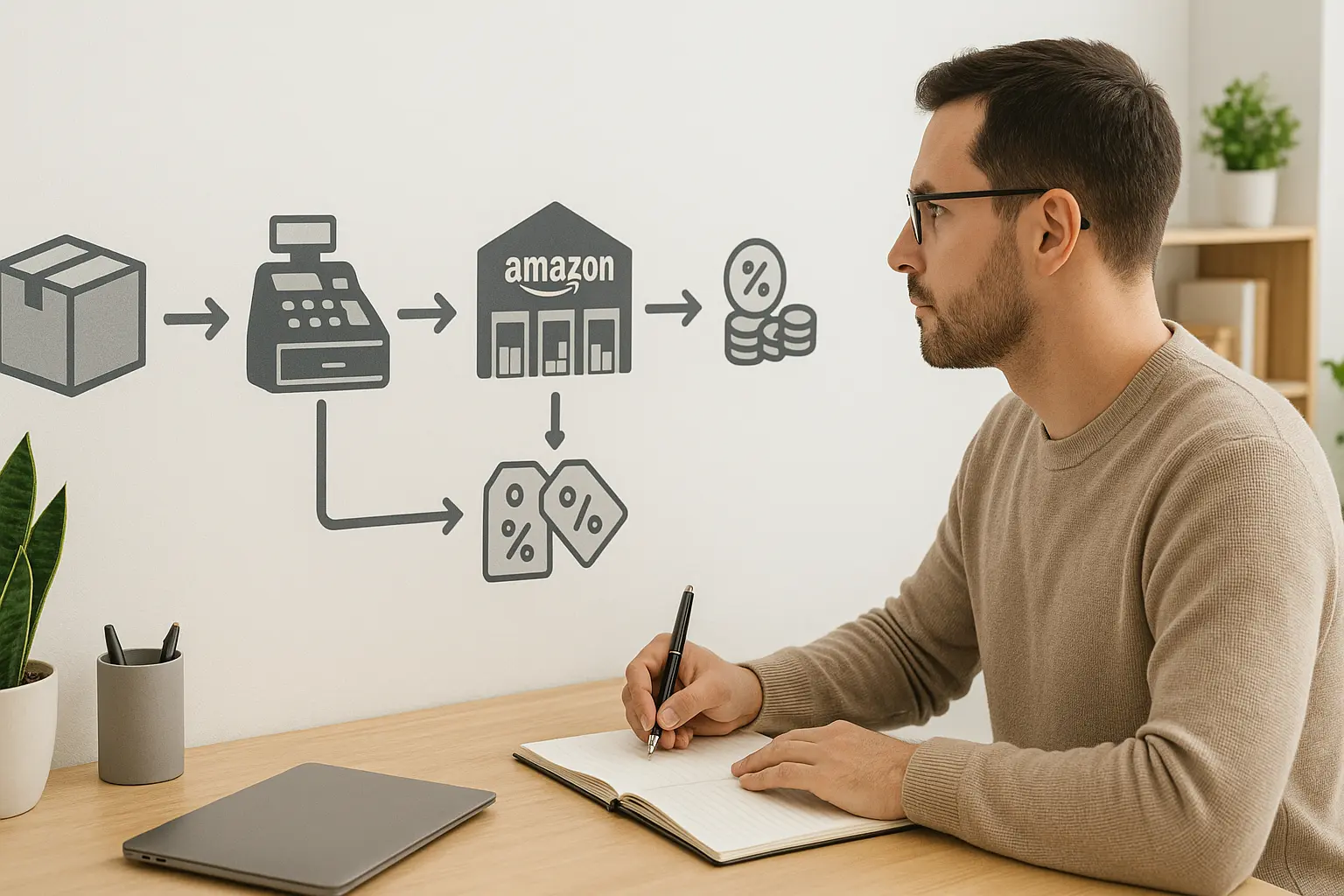
Amazon’s fees can eat into your profits fast, so it’s crucial to understand them upfront.
Key costs to track include:
- Account fees: $0.99/item or $39.99/month
- Referral fees: 8%–45% depending on category
- Fulfillment & storage: Based on size, weight, and season
- Other charges: Ads, returns, and optional services
Your total cost depends on your selling plan, product type, and fulfillment method (FBA or FBM). Use Amazon’s fee calculators to estimate expenses before listing.
Plan carefully, price smart, and track your margins — that’s how you stay profitable on Amazon.
👉 Check out this complete guide about What You Need to Know About Selling on Amazon to know more about how selling on Amazon works.
Frequently Asked Questions
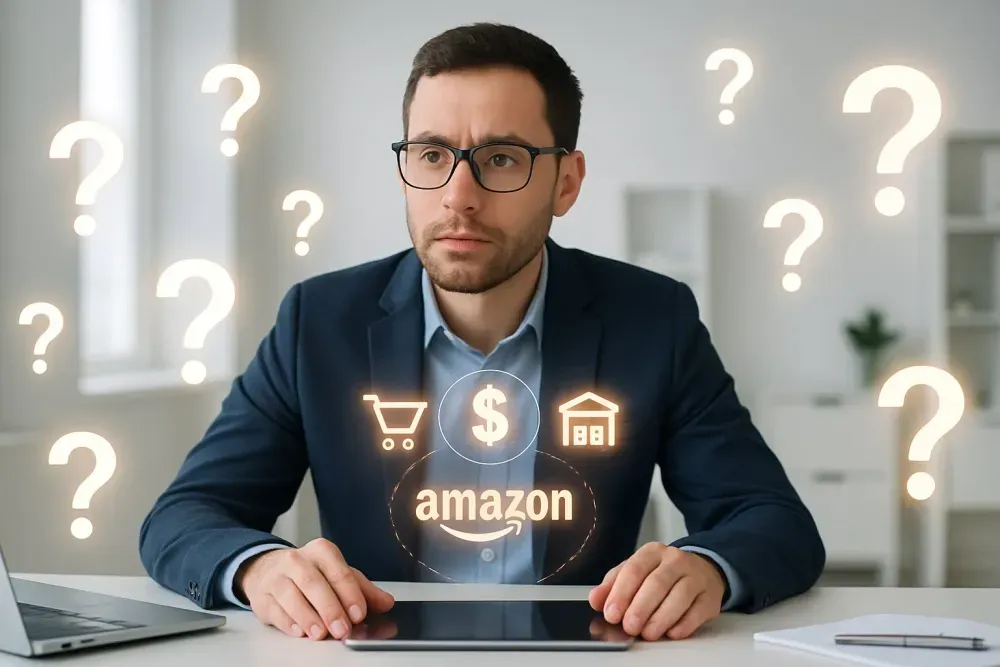
1. What are the fees to sell on Amazon?
Amazon charges a referral fee, a monthly subscription fee (if you choose the Professional plan), and optional fulfillment fees.
Referral fees are based on product category. You may also pay extra for storage, advertising, or fulfillment services.
2. How much does Amazon charge per sale?
Amazon takes a referral fee on every sale, usually between 8% and 15% of the product price.
The exact amount depends on your product category. If you use FBA, you'll also pay fulfillment and storage fees.
3. What is the difference between Amazon Individual and Professional seller plans?
The Individual plan charges $0.99 per item sold, while the Professional plan costs $39.99/month regardless of sales volume.
Professional sellers get extra tools like bulk listings, ads, and access to the Buy Box.
4. How does Amazon calculate referral fees?
Amazon calculates referral fees as a percentage of your product’s total price, including shipping and gift wrap.
Each product category has a set rate, and the fee is applied per item sold.
5. Are there any monthly fees for selling on Amazon?
Yes, the Professional plan has a $39.99 monthly fee. The Individual plan has no monthly charge, but adds a $0.99 fee per item sold.
Choose the plan based on how many items you sell each month.
6. What are the Fulfillment by Amazon (FBA) fees?
FBA fees include picking, packing, shipping, and storage. Rates vary based on item size, weight, and time stored.
You pay per unit, plus monthly storage fees if your products stay in Amazon's warehouse.
7. Can I sell on Amazon without paying fees?
You can’t avoid fees entirely, but you can start with the Individual plan to avoid monthly charges.
Even then, you’ll still pay referral fees and other costs if you make a sale or use optional services.
8. How do I pay Amazon seller fees?
Amazon deducts your fees from your sales balance automatically.
If your balance isn’t enough, the remaining fees are charged to your registered credit card.
9. What additional costs should I expect besides Amazon fees?
Other costs may include product sourcing, shipping to Amazon (for FBA), marketing, returns, and taxes.
Tools, software, packaging, and refunds can also impact your total expenses.
10. How can I estimate my total Amazon selling costs?
Use Amazon’s free FBA Revenue Calculator or Seller Central’s Fee Preview to estimate total fees and profit margins.
These tools help you account for referral fees, FBA costs, and shipping to get a clearer picture of your earnings.
Ready to Start Selling on Amazon—Smarter?
Join our mini-course at WAH Academy and get real advice on proper choosing of your plan, pricing your products, and setting up your first listing—without the guesswork.
No guesswork. No fluff. Just real tools and support to get you moving.
Tap the button and start building your Amazon business today.
